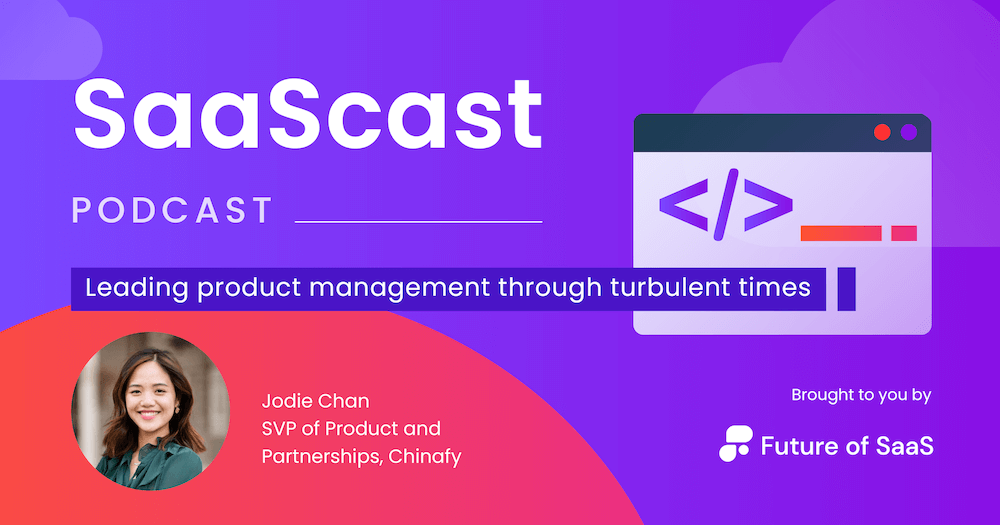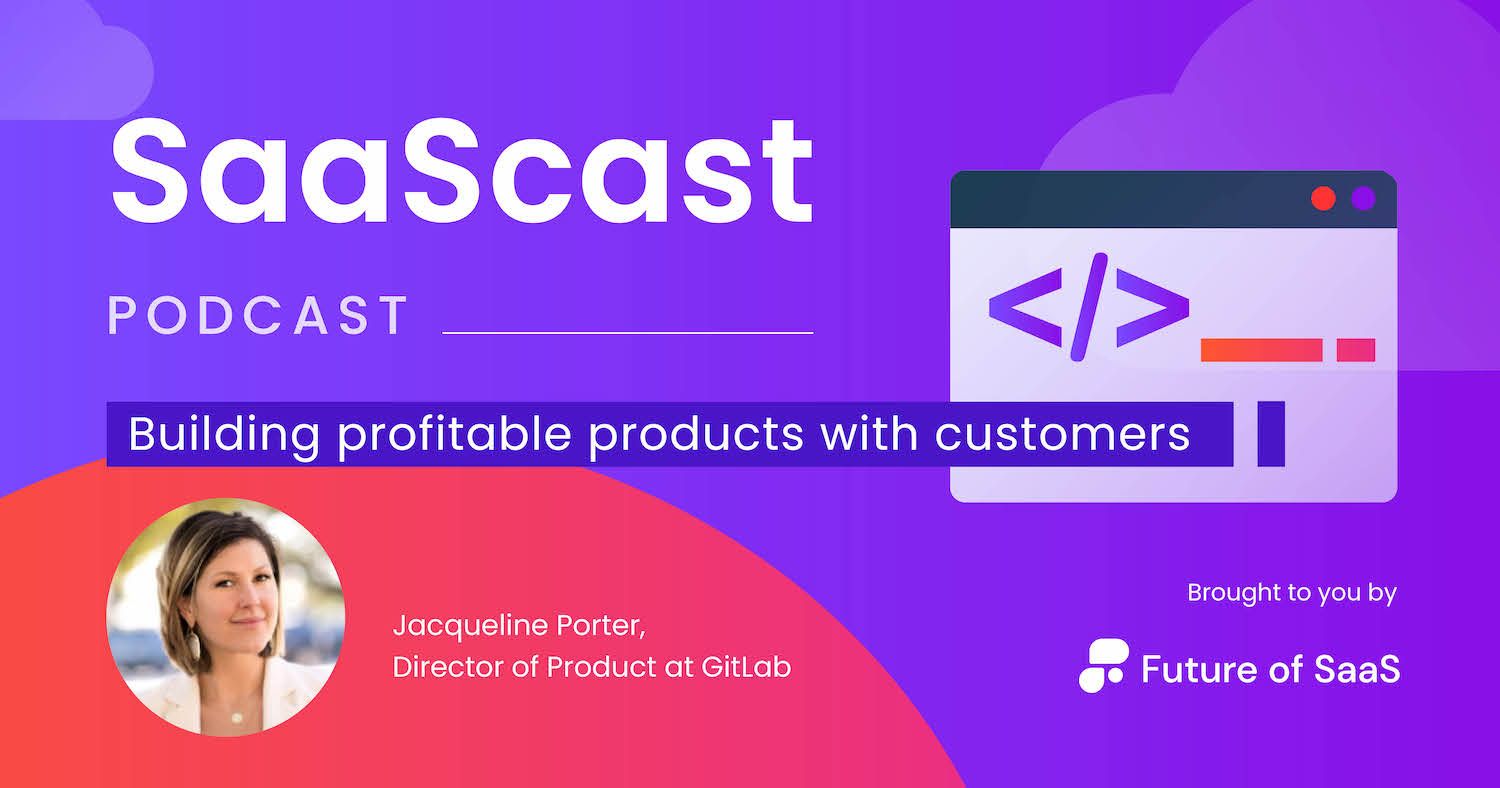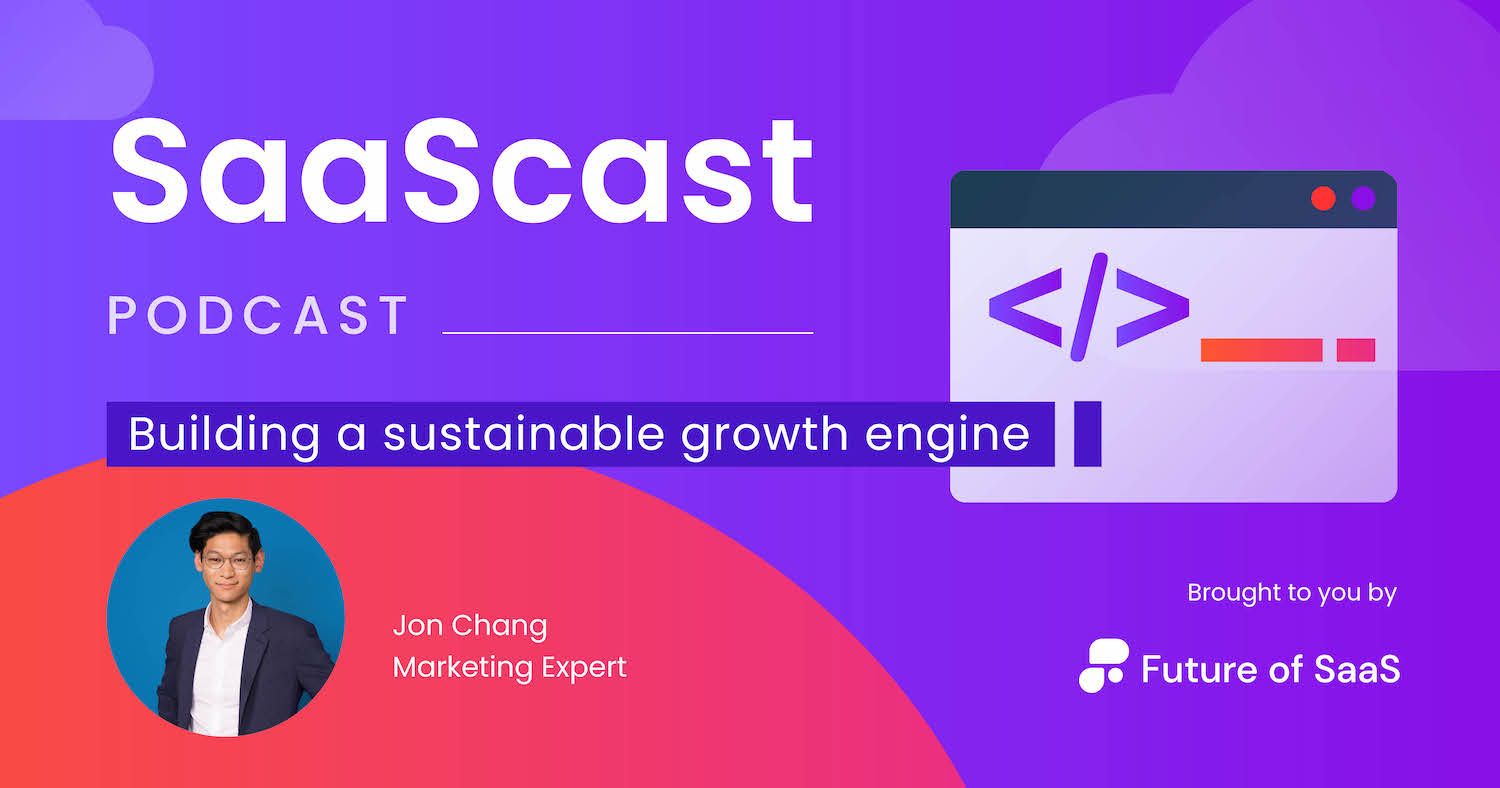This article is based on Jon's appearance on SaaScast. Check out the full unedited conversation right here.
If you’re aiming to build a sustainable growth engine in your startup, the first thing you need to do is define what you mean by growth. Let me put on my teacher hat and tell you what I mean.
Most organizations in the SaaS industry define growth as an increase in the total number of users or customers.
However, because the concept of growth is so cross-disciplinary and today it's best used in relation to the product, companies might instead talk about the growth of monthly active users, growth of total gross merchandise value (GMV), or growth of revenue. Whichever metric you choose to focus on, the first thing to do is define that as your objective.
Defining sustainable growth
Moving on to the other keyword: sustainable, this is about how you can continue increasing the total volume of those KPIs at a highly efficient rate. Here's a concrete use case.
Let's say you run a mobile shopping app where growth is defined as an increase in the number of net new customers. To make that growth sustainable, you’ll want to reduce the amount of money you spend per customer. In other words, you need to lower your customer acquisition cost (CAC).
To do that, you’ll need to look at your paid media mix and determine which ones provide you the lowest cost per install, the lowest cost per user, or if you're in B2B the lowest cost per lead.
In today's day and age, we’re seeing diminishing returns from paid media, so you’ll also need to hone in on the organic channels that provide you with non-paid new users. That’s going to take your growth from scalable to sustainable because you'll have a lower CAC.

The full-funnel approach
Now, growth isn't just acquisition in most cases, so let’s take a more full-funnel approach. This is where you want to use lifecycle or product marketing to increase the conversion rate of net new users or leads into actual customers.
I’m aware that I’m explaining very basic math to very smart people here, but if you increase your conversion rate by 4% with a kick-ass automation plan, then you’ll greatly reduce your reliance on paid and organic acquisition.
Plus, you can have a higher cost per install, while still lowering your CAC because your lifecycle plan is doing a greater job.
To put it as a formula, sustainable growth = an increase in X KPI x Y efficiency unit economics metric.
Why sustainable growth is more important today than ever before
The current economic climate has made sustainable growth a bigger priority than ever. We’re seeing a reduction in the overall capital available to startups and even to larger businesses. 2022 was a tough year – according to NBC News, over 90,000 tech workers were laid off, and since then, we've seen thousands more.
There are a bunch of macroeconomic issues at play. One is that due to tightened income levels, consumer spending is lower overall. That means that businesses that are dependent on consumer spending are not able to reinvest, or their runway is much smaller than they had originally planned for.
The problem for startups
The second thing is that if you’re a startup, you're likely still dependent on venture capital or outside capital of some sort. Again, if that capital isn’t available anymore, you have a much shorter runway.
In either of these situations, one of the easiest things to do – I might be showing my bias here – is to blame marketing and cut the marketing budget. That's pretty tough. It’s tough because as a marketer, you're then expected to pull a rabbit out of a hat instead of building a growth engine.
Perhaps that rabbit takes the form of a strong social media strategy. Or perhaps you do the unit economics and find out that a 30% increase in influencer marketing only has a 20% increase in CAC, whereas a 30% increase in your Meta budget results in a 50% increase in CAC.
This is what marketers have to do right now. We have to figure out the most important places to spend, which may be a little unconventional, and we have to find a way to get new users without spending more money.

Balancing customer acquisition and retention for sustainable growth
Of course, getting new customers is just one side of the coin. You also need to think about how to hold onto the customers you’ve already got. Ideally, these two goals should be working together in your sustainable growth engine.
If you're running a SaaS startup, more renewals and an increased customer lifetime value (LTV) will typically have a larger impact on your annual recurring revenue than acquiring new customers.
At IBM, we used to say that paying for an expensive steak dinner with a client to renew their contract often has a larger revenue impact than spending all that money to acquire net new customers. Plus, you’ll continue to gather more total users through word of mouth, and that's wonderful.
I tend to equate all digital marketing, but this use case especially, to online dating. First of all, you’re trying to match – a potential customer is searching for something online and they find your content, or they’re scrolling through TikTok and they come across your video.
Hopefully, the way that you've made your content matches what they're currently looking for. That's step one.
The second step on your dating journey is to start messaging them. You're sending them little value propositions, you’re showing them why they should like you, and then that person determines whether or not your belief in who you are aligns with what they believe as well.
If it does, great! You’ve secured your first date. That’s the acquisition side.
Now let’s move onto retention. You’ve gone on a date with someone and now you're asking them to go on another one. If they liked you (or your product) enough, hopefully they’ll say yes.

Fuelling your startup’s growth with quality content and a community
Taking this back to our sustainable growth engine, a great way to bridge your acquisition and retention strategies is with valuable content. It's like what Future of SaaS is doing.
You need to find ways to provide value while amplifying the product. Growth marketing is ultimately here to amplify the message of the product and get as many excited people as possible to try it. Then it's the product's job to deliver on the value prop and create an enjoyable experience.
Webinars, podcasts, articles, and Slack groups are great ways to get more leads over a much longer timeframe, but whatever you do, don't sell in these places. You can build very organic growth in a Slack channel.
Then, when a member of your community needs your product, they know you, they have an avenue to directly communicate with you, and they trust you because you've been providing highly valuable content without giving them the hard sell.
We're seeing this more and more in companies that are growing at a massive scale. Another great example of a company that provides value for free is Paper. They partner with school districts who then bring on students for free online 24/7 tutoring.
Do you have an existing network that you can tap into? Can you give them value for free? A Slack group isn’t a magic bullet, but it’s fairly easy to set up and it can create an entire growth engine for an organization.
The best-in-class of sustainable growth
We've covered a fair bit of sustainable growth theory. Now let’s see what a successful sustainable growth strategy looks like in practice.
Klarna’s approach to sustainable growth
Klarna has an amazing growth program. That's because there's a good growth mentality, and they work in agile iterative cycles.
The growth team there works also very closely with product; in fact, when I left it, nearly half of the employees in the growth department were engineers as well.
Plus, they are very data-driven. In short, they have exactly the kind of culture that inspires growth, but let’s get into how we put it to work during my time there.
The first part was figuring out where our diminishing return on advertising spend was. Let’s say, you can spend exactly $245,000 per month on paid ads and that gives you a $3 cost per install, but if you spend one more dollar, the cost per install increases dramatically.
Great! That gives you an immediate safety net while your organic strategies take root. That was one of the first things that we set up at Klarna.
Simultaneously, we were figuring out ways to drive organic acquisitions and build trust in the industry. The brand team did this through activations that we described as “temporary monopolies on highly passionate communities.”
For instance, we launched with some of the stars of RuPaul’s Drag Race and we ran a campaign for dog lovers in partnership with The Dogist.

The automation program
The next thing we did was focus on an automation program. We started with the onboarding flow, trying to determine which product features and value props made the most sense.
Then we did a lot more product-led growth to drive engagement. The product team created delivery tracking, so then we started conquesting delivery tracking organizations.
We even made it so you don't have to purchase using Klarna to track your deliveries. On top of that, we introduced price drop notifications.
This product-led growth strategy means that once people get into the funnel – from whatever source – you can start to educate them through automation marketing.
Then they get to experience unique product features that help them stay within the ecosystem without purchasing. That's wonderful for everyone involved.
Now let's say they purchase. Klarna made a loyalty program called Vibe, so based on when you buy and from what merchants, you get extra Vibes (points) to spend elsewhere. There’s also a referral program running alongside that, where customers can make X amount of dollars for new people acquired.

The co-marketing strategy
And then the final component is a co-marketing strategy. A ton of merchants like H&M, Home Depot, and Sephora use Klarna, and they often run co-marketing programs.
For example, we would run an event and Sephora would participate. We might do a giveaway and Sephora might share a beauty tutorial and give away a beauty package.
All of these pieces together make up that sustainable growth engine. Like any engine, it’s made up of multiple components that all work in sync, and if any of these components breaks down, the whole engine works a lot less efficiently.
The engine I’ve described is a fairly complex one, but it's a great example of some of the core components that you could put into place for sustainable growth in your organization.
Want to hear the full unedited conversation? Check it out here! 👇



